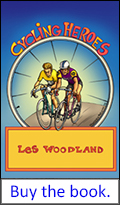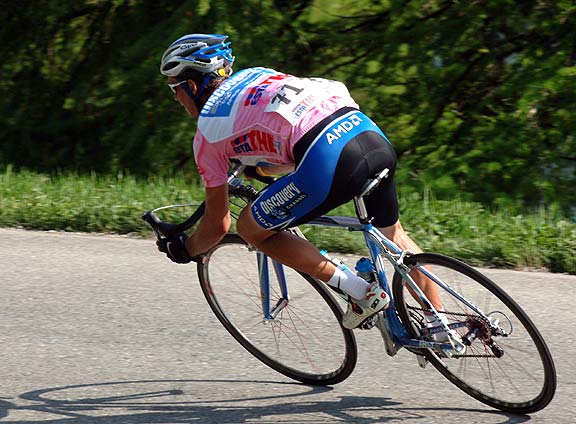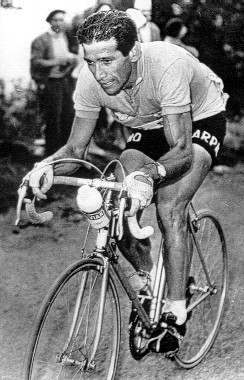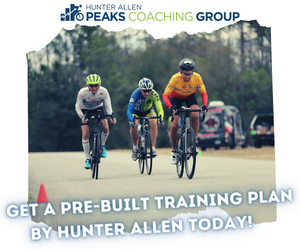

Descending Skills:
How to go Downhill
By Bill McLaughlin, PCG Elite Coach
Back to Training and Fitness index page

Les Woodland's book Cycling Heroes: The Golden Age is available as an audiobook here. For the print and Kindle eBook versions, just click on the Amazon link on the right.
We have another descending article: Descending Confidently
Bill McLaughlin writes:
Descending can be one of the most difficult skills/arts to master. Not everyone is a great or even good descender. That being said, there is no reason to fear it; with the proper training and practice you can improve.
Descending is like anything else: the more you do it, the better and more comfortable you are at it. The following basic skills and drills should help you to improve. You may never race down the Alps at 50-60 mph, but you’ll gain the confidence to hold your own in your local road race and, with more and more practice, bigger and steeper descents.
1. First, you must train on familiar ground. If all the turns and bumps are familiar and somewhat comfortable to you, you will be able to relax. As you gain confidence on familiar terrain, you can branch out to longer and more twisting descents.

Paolo Savoldelli is thought by some to be the finest descender ever.
2. You should always keep your center of gravity low. The best is to be in the drops, elbows slightly bent. On turns always weight the outside leg with the majority of your body weight.
3. Always keep your head up and eyes forward. Look through the turn to where you want to go, always at least ten meters or so up the road. Don’t keep your eyes fixed at the road directly in front of your wheel, because you won’t see road hazards until it is too late to avoid them.
4. During a descent it’s wiser to counter-steer than make sharp hard turns. Again, this takes practice, best done on familiar terrain and a flat surface such as a parking lot, around your block, or any similar course that you can repeat. Counter-steering means leaning your bike relatively more than your body. You initiate counter-steering by pressing down on the inside hand, which increases the lean of your bike into the turn. This allows the most steering control and makes it easiest to effect a change in direction during a turn. It is suitable for when you cannot see up the roadway around the turn, or for off-camber and decreasing radius turns. If the lean of your bike is great, it may prevent pedaling, and that is why number 2 above is important to follow.

And some say this man, Gastone Nencini, is cycling's best-ever descender.
5. Entering corners at speed is also a skill to practice. Start out slowly the first few times to learn the proper lines to take, then slowly build the speed till you start to feel comfortable before an all-out effort. Always obey traffic laws and pay close attention to traffic. Blind corners should always be taken slowly and with great caution. It’s better to err on the side of safety. For a right turn, start from as close to the center line as possible. Counter-steer (as described in number 4) right to the apex. As you exit the turn, start to bring your bike more upright. A left turn is pretty much the same, except that you start at the right edge of the roadway and counter-steer left to the apex. Again, as you are leaving the turn, start to upright your bike.
6. Last but not least (and saved for last for a reason) is braking! People tend to brake at the wrong times and too much. Again, practice, practice, and more practice will make you more comfortable and less likely to utilize your brakes too much. Do all your braking prior to entering a turn, while your bike is still in the upright position, before any counter-steering or turning. Most importantly, stay off your brakes throughout the turn, as it tends to cause your bike to track more straight than turn, and it can also lift the bike to an upright position. Mainly stay off the front brake; as you gain more confidence, you can apply a little rear brake as necessary.
With practice, these skills will improve your descents in the upcoming season and beyond. Remember to relax and stay loose; never be tense and rigid holding the bars. Good luck, and have a safe and productive season!
Back to Training and Fitness index page
.









